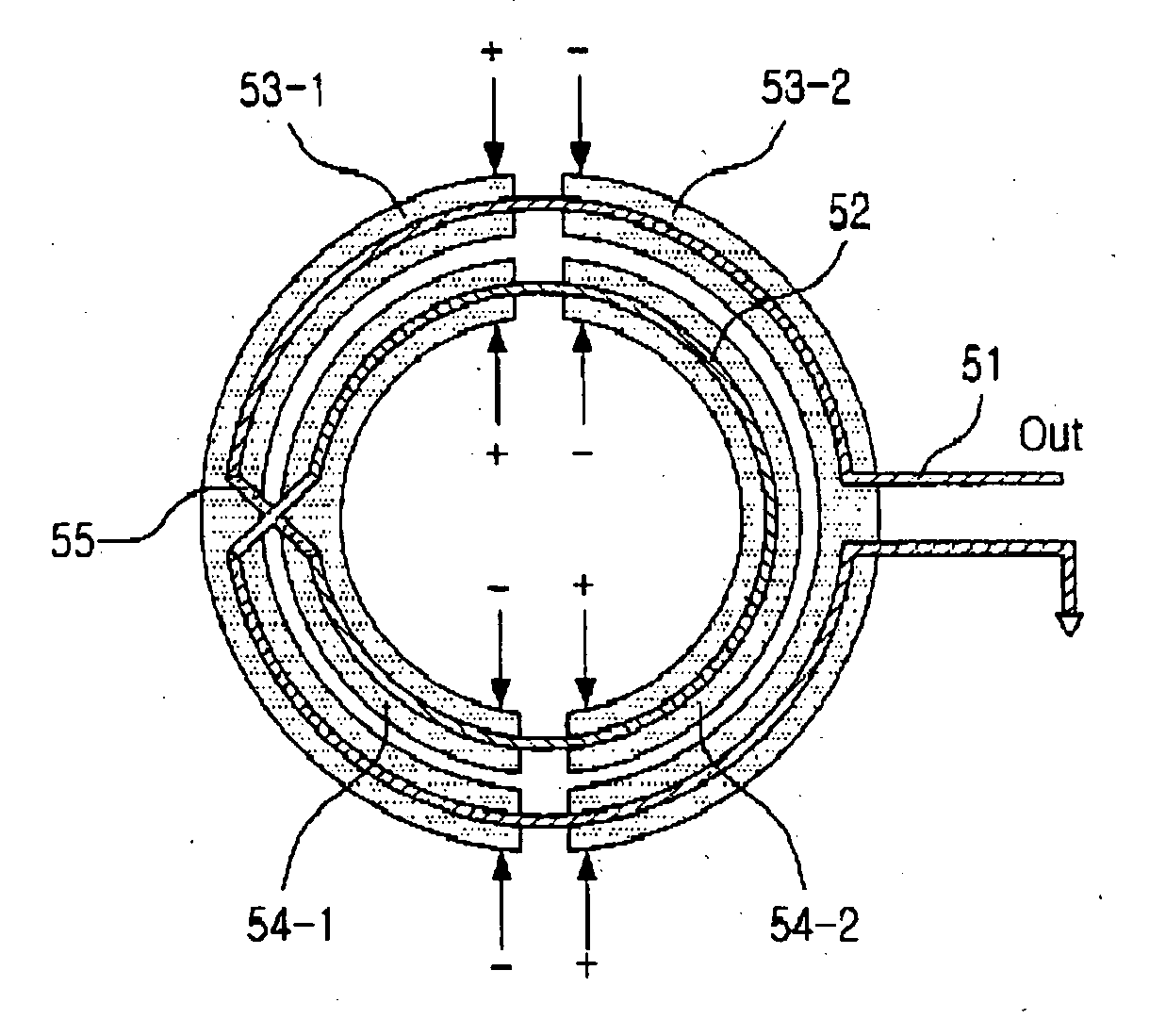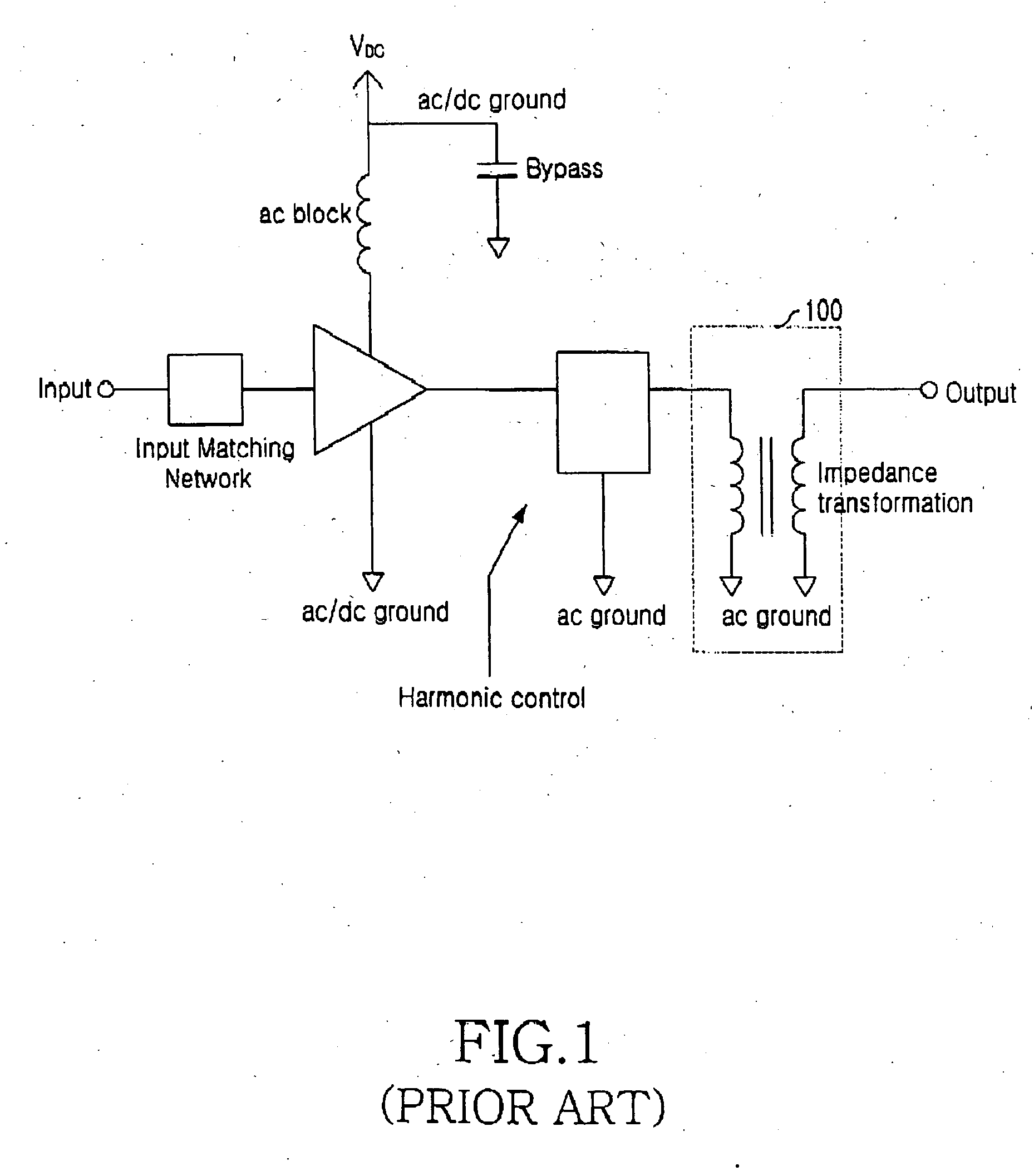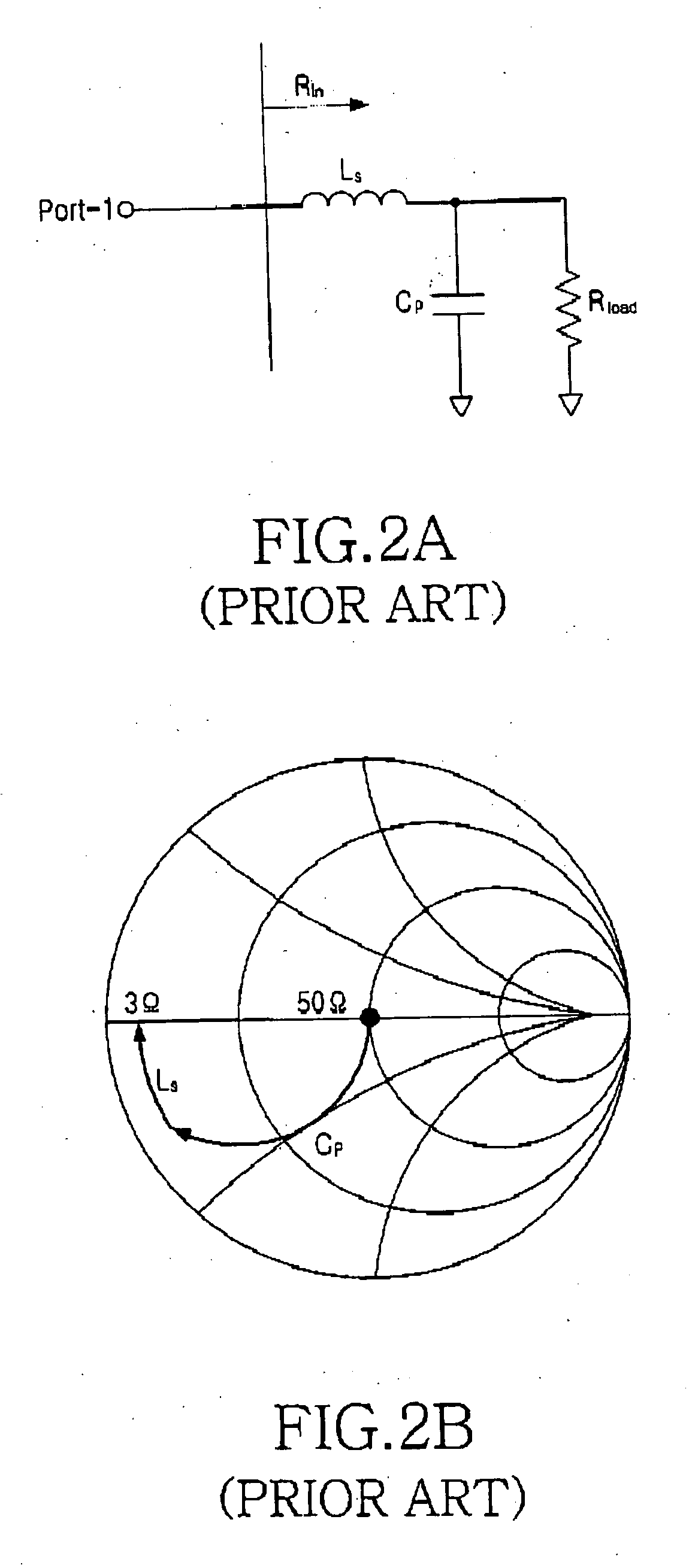Small-sized on-chip CMOS power amplifier having improved efficiency
a power amplifier and small chip technology, applied in the field of radio frequency (rf) system, can solve the problems of power efficiency reduction, cmos technique not stabilized, cmos on-chip not achieved, etc., and achieve the effect of maximizing output, improving efficiency, and enhancing a k factor
- Summary
- Abstract
- Description
- Claims
- Application Information
AI Technical Summary
Benefits of technology
Problems solved by technology
Method used
Image
Examples
Embodiment Construction
[0037] Hereinafter, preferred embodiments of the present invention will be described in detail with reference to the accompanying drawings. It is noted that the same or similar components in drawings are designated by the same reference numerals as far as possible although they are shown in different drawings. Additionally, in the following description of the present invention, a detailed description of known functions and configurations incorporated herein will be omitted when it may make the subject matter of the present invention rather unclear.
[0038]FIGS. 5A to 5C are views illustrating an on-chip CMOS power amplifier having an improved efficiency in a small size according to an embodiment of the present invention. More specifically, FIGS. 5A to 5C illustrate an on-chip CMOS power amplifier having an improved efficiency in a small size where an optimized Q transformer is easily realized and a primary winding and a secondary winding are placed on an upper layer and a lower layer...
PUM
 Login to View More
Login to View More Abstract
Description
Claims
Application Information
 Login to View More
Login to View More - R&D
- Intellectual Property
- Life Sciences
- Materials
- Tech Scout
- Unparalleled Data Quality
- Higher Quality Content
- 60% Fewer Hallucinations
Browse by: Latest US Patents, China's latest patents, Technical Efficacy Thesaurus, Application Domain, Technology Topic, Popular Technical Reports.
© 2025 PatSnap. All rights reserved.Legal|Privacy policy|Modern Slavery Act Transparency Statement|Sitemap|About US| Contact US: help@patsnap.com



